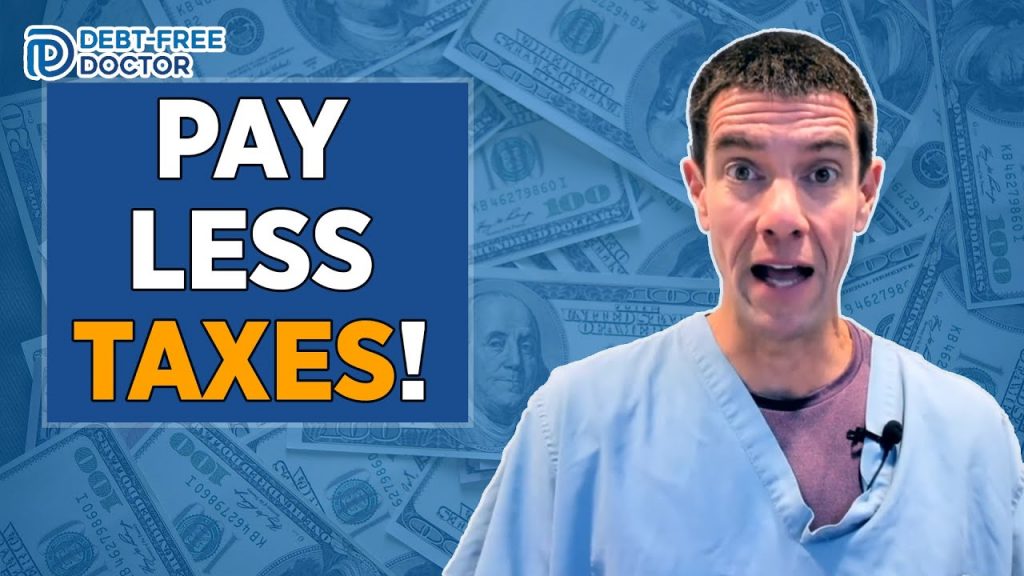Real Estate Tax Savings: The Power of Accelerated Depreciation
Recently, I was listening to a podcast where Grant Cardone was discussing taxes and real estate. At one point he said something that made me completely stop my uphill (moderately fast 🙂 ) walk and think for a minute.
In a nutshell, this was the point he was trying to make: During your lifetime, the BIGGEST expense incurred is going to be taxes, right? Especially if you’re a high-income earner as the MORE you make, the HIGHER your tax bill.
What made me stop was this question he posed: “If someone were to only spend 6-12 months on educating themselves on something that they know for a fact is going to negatively affect their finances their entire career, what do you think that’d do to their future wealth?”
Boom! Drop the mic!
Sometimes it’s the smallest things that can make the BIGGEST difference. At that point I started adding up how many years I’d spent in school:
4 years of college + 4 years dental school + 4 years of residency
Unfortunately, I’d spent zero on learning about how money and tax savings work. It was at this point that I started thinking about our education system on a larger scale.
{As a side note, I realize this article is about accelerated depreciation in real estate, but I promise I’m going to tie all of this in together shortly.}
It seems that the longer we’re in training, the better our chances are to have a high income. What typically goes along with this? You guessed it.
A HIGH tax bill.
So here we are taking out loans just to get by, delaying gratification and then starting out much later than most people.
I didn’t start practicing until I was 30.
So I want you to think about our education system for a minute. It’s actually set up to put us in the Rat Race from Day 1. Especially if you’re a doctor or other high-income professional.
Related article: Escape The Rat Race: What School Failed To Teach You About Money
If you don’t learn how to lower your tax rate each year, then you’ll do what EVERYONE does:
- work for 40+ years
- take forever to pay off student debt
- follow the “accumulation” method path via 401k
- pay 7+ figures in taxes during your career
- get stuck in the rat race with no early way out
Ok, I’m going to get off my soap box now and tie this into our main topic. The majority of millionaires invest in real estate to not only acquire recurring income, but also the unique tax deductions. And one of the MOST significant tax benefits of owning rental property is something called depreciation that can be used to reduce taxable income.
Which leads us into an even larger tax benefit called accelerated depreciation.
Before we discuss how accelerated depreciation works, let’s first start off with the basics you should know regarding depreciation.
Don’t Miss Any Updates. Each week I’ll send you advice on how to reach financial independence with passive income from real estate.
Sign up for my newsletterWhat Is Depreciation?
Depreciation is one of the RARE gifts the Internal Revenue Service gives us tax payers (yes, it’s a gift).
This is a unique tax strategy that allows you to write off the value of an asset over time.
Just like most things lose their value over time (computer, cell phone, etc.), the IRS allows us to take a tax deduction for that declining value (aka depreciation).
Here’s the cool thing about a real estate investment: Even though it typically appreciates over time in value, the IRS still allows us to claim this depreciation benefit.
Straight-line depreciation
Basic depreciation is called straight-line depreciation.
By using this method, the IRS allow owners of residential real estate to depreciate their property over 27.5 years.
Here’s an example:
Dr. L purchased a property with a value of $2.75 million (excluding land costs as land can’t be depreciated). In this case, it’d yield $100,000 in depreciation per year over the next 27.5 years ($2.75 million/ 27.5 years = $100,000).
Who wants to wait 27.5 years to benefit, right? Well, the good news is there’s something that can speed up or accelerate the depreciation time period.
Understanding Accelerated Depreciation In Real Estate
Accelerated depreciation
Again, for those that don’t want to wait 27.5 years to benefit, the IRS allows the tax payer to accelerate the depreciation via a cost segregation study.
Accelerated depreciation allows items to be depreciated over shorter time schedules of 5, 7, and 15 years by identifying all of the non-structural elements of the property along with any land improvements (more on this process below when we discuss the cost segregation study).
This creates larger paper losses in the early years the property is owned which has the effect of giving the investor more depreciation benefit upfront.
This is especially good for the passive investor as many of the real estate syndication deals a 5-7 year hold time.
Now that you understand that depreciation can be “accelerated”, let’s discuss the particular process of how this is accomplished via a cost segregation study.
Do you want to lower your taxes and increase your cash flow? Schedule your cost segregation study HERE.
How Do Cost Segregation Studies Work?
Cost segregation is a powerful tool that allows those who have constructed, purchased, expanded, or remodeled any type of real estate to increase cash flow by accelerating depreciation schedules and deferring income taxes.
A cost segregation study identifies and reclassifies personal property assets to shorten the depreciation time for taxation purposes, which reduces current income tax obligations.
In other words, this study will “segregate” out the different costs of the building.
Instead of taking the property and dividing it into 2 components (building and land), it can now be divided into 4 components:
- Land
- Building
- Personal Property
- Land Improvements
Personal property are the non-permanently affixed items to the building that do not relate to the overall operation and maintenance of the building such as:
- carpet
- cabinets
- drapes
- security systems
- lighting, fixtures
These items are now able to become depreciated over their useful lives – normally 5-7 years – rather than over the useful life of the property (27.5 years).
Land improvements include items located outside a building that are affixed to the land and do not relate to the overall operation and maintenance of a building.
Examples include:
- parking lots
- curbs, drive ways
- swimming pool
- sidewalks
These get depreciated over 15 years.
The primary goal is to identify all costs that can be depreciated over a shorter tax life (typically 5, 7 and 15 years) than the building (27.5 years for rental residential properties or 39 years for commercial properties).
Reducing tax lives results in:
- accelerated depreciation deductions
- a reduced tax liability
- increased cash flow
Remember, depreciation deductions only count the value of the building, not the land.
For more information about the cost segregation study, check out this video:
What Is An Example Of Accelerated Depreciation?
- $3.5 million purchase price of property
- $200,000 NOI
- $750,000 land
Remember, the land value ($750K) can’t be depreciated.
He’s now left with the $2,750,000 apartment which can be broken up as follows:
- personal property ($300,000)
- land improvements ($250,000)
$2,750,000 – $300,000 – $250,000 = $2,200,000 which is what the building is NOW worth
If he only used straight line depreciation, he’d be able to write off $80k/year for 27.5 years:
- $2,200,000/27.5 = $80,000
He decides to obtain a cost segregation study which allows:
- $300,000 personal property/5 = $60,000
- $250,000 land improvement/15 = $16,670
Dr. A can now depreciate:
- $60,000/yr over the next 5 years (personal property)
- $16,670/yr over the next 15 years (land improvement)
Total depreciation: $156,670 = ($80,000 + $60,000 + $16,670)
- $200,000 (NOI) – $156,670 = $43,330
He’s now only taxed on the $43,330.
Assuming he’s in the 37% tax bracket, his tax with the accelerated depreciation:
- $43,330 x 37% = $16,032
In the above example with using the accelerated depreciation, he lowers his tax bill to ONLY $16,032.
I hope you’re starting to see how adding rental properties to your portfolio can be used to grow your wealth.
3 Advantages of Accelerated Depreciation
#1. Reduction of initial costs
Because you’re able to get more tax deductions in the first few years of owning property, accelerated depreciation allows you to decrease the initial set up costs.
This in invaluable to creating a cash-flowing business early on as you’ll have more money to reinvest in your rental business and potentially scale faster.
#2. Allow for higher upfront deductions
Accelerated depreciation allows you to maximize deductions upfront to help significantly reduce the end-of-year tax bill.
This is especially helpful if you have a new property that might be having problems with short-term cash flow.
#3. Reduction of net income
The MOST significant advantage of accelerated depreciation is the reduction of an investor’s net taxable income.
Paper loss created by depreciation can be used to offset other profits in the same tax year, such as:
- net income from other rental property
- dividend income from a stock
Here’s the kicker. This is NOT a “use it or lose it” strategy. Any of the remaining losses can be carried forward into future tax years to help offset future gains.
Do you want to lower your taxes and increase your cash flow? Schedule your cost segregation study HERE.
Do You Have To Pay Back Depreciation On Rental Property?
Depreciation offers a way to reduce taxes at an investor’s ordinary income tax rate. It also helps to reduce the property’s cost basis which determines the loss or gain during the sale.
If the property is held for at least a year, long-term capital gains tax is paid. Depending on your income, this can range between 0-20%. Yet, not all gains benefit from the long-term capital gain tax rates.
The IRS implemented something called deprecation recapture in order to “recapture” the taxes you would have paid over the years without the benefit of claiming depreciation.
The depreciation recapture rate on this portion of the gain is 25%.
The reasoning the IRS came up with this is that since the taxpayer received the benefit of a deduction that offset ordinary income tax rates (close to 40% for most high-income earners), the government is not going to grant the more favorable capital gains rates (0-20%) on the portion of the gain relating to these prior depreciation deductions.
Final Thoughts
Besides the extra streams of cash flow to help replace my dental income, real estate syndications allow me to help reduce our tax liabilities by utilizing accelerated depreciation.
Before you start the investment process, make sure you have a knowledgeable CPA on your team and consider joining my Passive Investors Circle (accredited investors only).
Join the Passive Investors Circle



